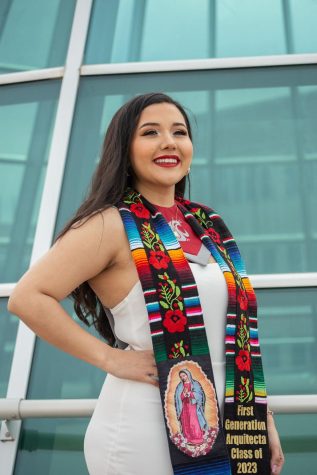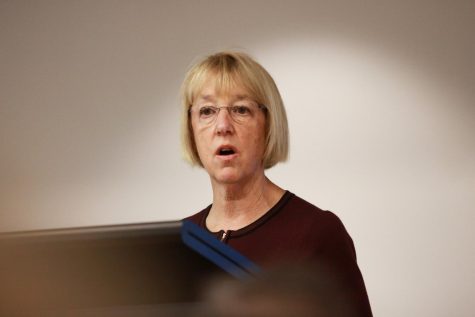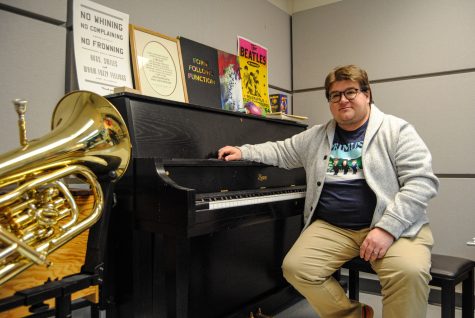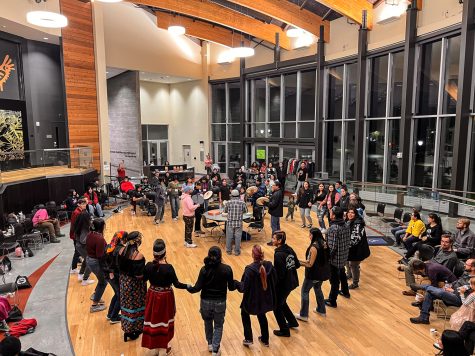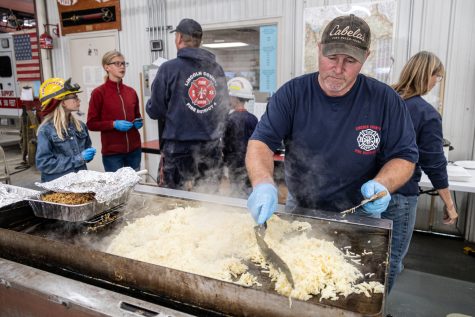WSU alumnus reflects on Cassini-Huygens
Atkinson first learned of the space probe Huygens in 1987
Huygens, attached to Cassini, launched in 1997 and did not reach Saturn until 2004. The probe was meant to gather data for only a few hours in the atmosphere and on the surface of Saturn.
September 27, 2017
David Atkinson had been looking forward to finally seeing the data from his team’s experiment with Huygens, a space probe stationed on one of Saturn’s moons.
Huygens had traveled to Jupiter attached to Cassini, which disintegrated earlier this month when NASA engineers navigated it into Saturn’s atmosphere, just a month shy of its 20th birthday. Huygens was the first probe to land on Titan, Saturn’s largest moon, on Jan. 14, 2005. Its goal was to investigate the atmosphere and surface of the moon.
Atkinson, a WSU alumnus, learned of the Huygens project in 1987, before the spacecraft’s official proposal. He was later selected for the experiment team, submerging him into the project.
He said he was anticipating receiving data on Titan’s winds, several years after Huygens collected it from the moon’s atmosphere in December 2004. But then something went wrong.
“I’m sitting in front of a computer panel in Germany, and waiting for the data to come in,” Atkinson said. “And in big red letters, the screen said the ultra-stable oscillator was turned off.”
The Doppler Wind experiment included two separate radio channels broadcasting the direction and magnitude of the winds on Titan. The ultra-stable oscillator was meant to tune the radio, in order to ensure the measurements reached Atkinson’s team.
A January 2012 news release from the Jet Propulsion Laboratory, a NASA field center housed at the California Institute of Technology, stated the spacecraft’s radio signal wasn’t detected in December 2011 and was communicated with Earth using a backup oscillator. The data collected by this oscillator would be lower-quality than that of the ultra-stable oscillator, the release read.
More than a decade of working on the proposal, research, and construction of Huygens was seemingly undone by an engineer who had forgotten to write the critical command for the ultra-stable oscillator to turn on.
Atkinson, a retired professor at the University of Idaho, recounts the day as one of the most horrible in his life. All of his and his team’s hard work had gone down the drain.
Although the experiment failed initially, two radio science receiver eventually picked up some information. Years later, one of Atkinson’s coworkers managed to obtain the information from one of the receivers, located in Green Bank, West Virginia.
The signal of the receiver was too weak to draw clear data. However, it was strong enough to measure the important wind frequencies released from Huygens, Atkinson said.
Cassini-Huygens was the fourth robotic spacecraft sent toward Saturn, in 1997, and the first to enter orbit, in 2004. The project was a partnership between NASA and the European Space Agency to explore the planet and its moons.
The Cassini-Huygens mission was named after two famous astronomers, Giovanni Cassini and Christiaan Huygens, who studied and made breakthrough discoveries about Saturn.
Atkinson worked on a team of six to eight other scientists, who switched back and forth between different instruments. Spending so much time with the team, Atkinson developed a bond with the scientists, describing them as an extended family.
Even though the team’s experiment was unsuccessful, he said he was very fortunate to have been involved in two flight missions, giving him the expertise to be called upon by NASA to deliberate on future flight missions regarding Saturn.
Despite being a retired professor, Atkinson said he is still on his toes. He is currently involved in four different flight mission proposals and hopes to be in another study within the next year.






